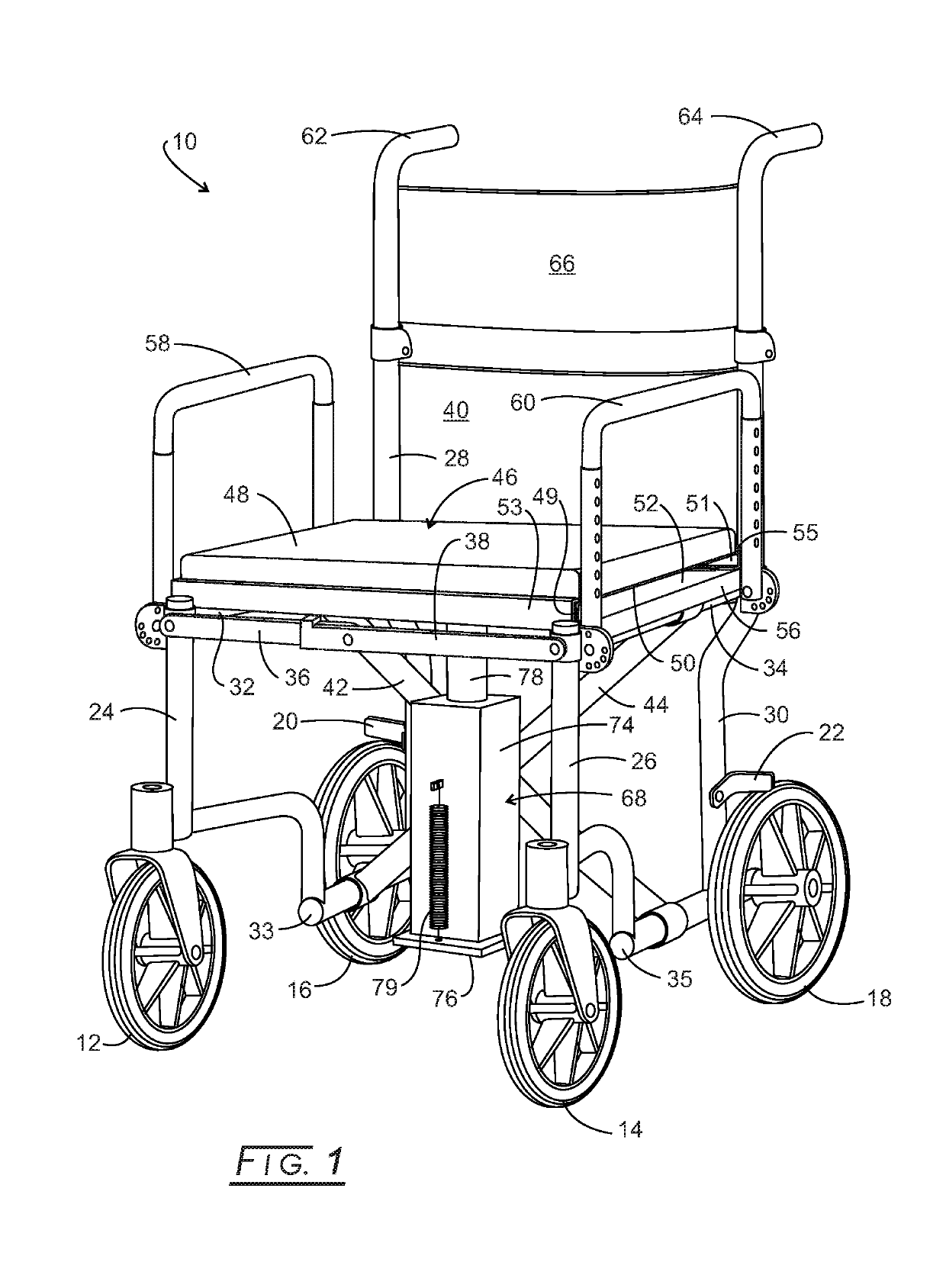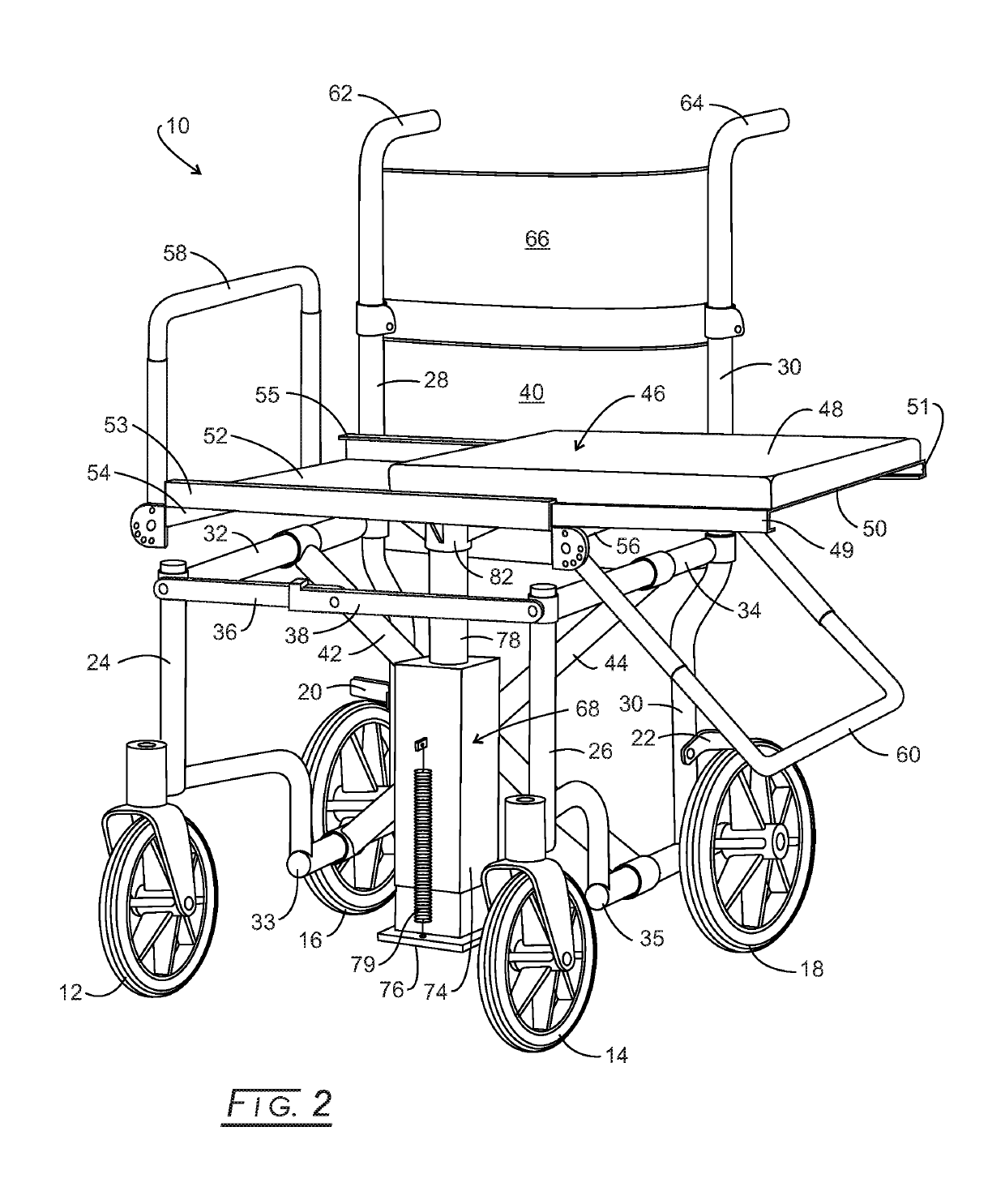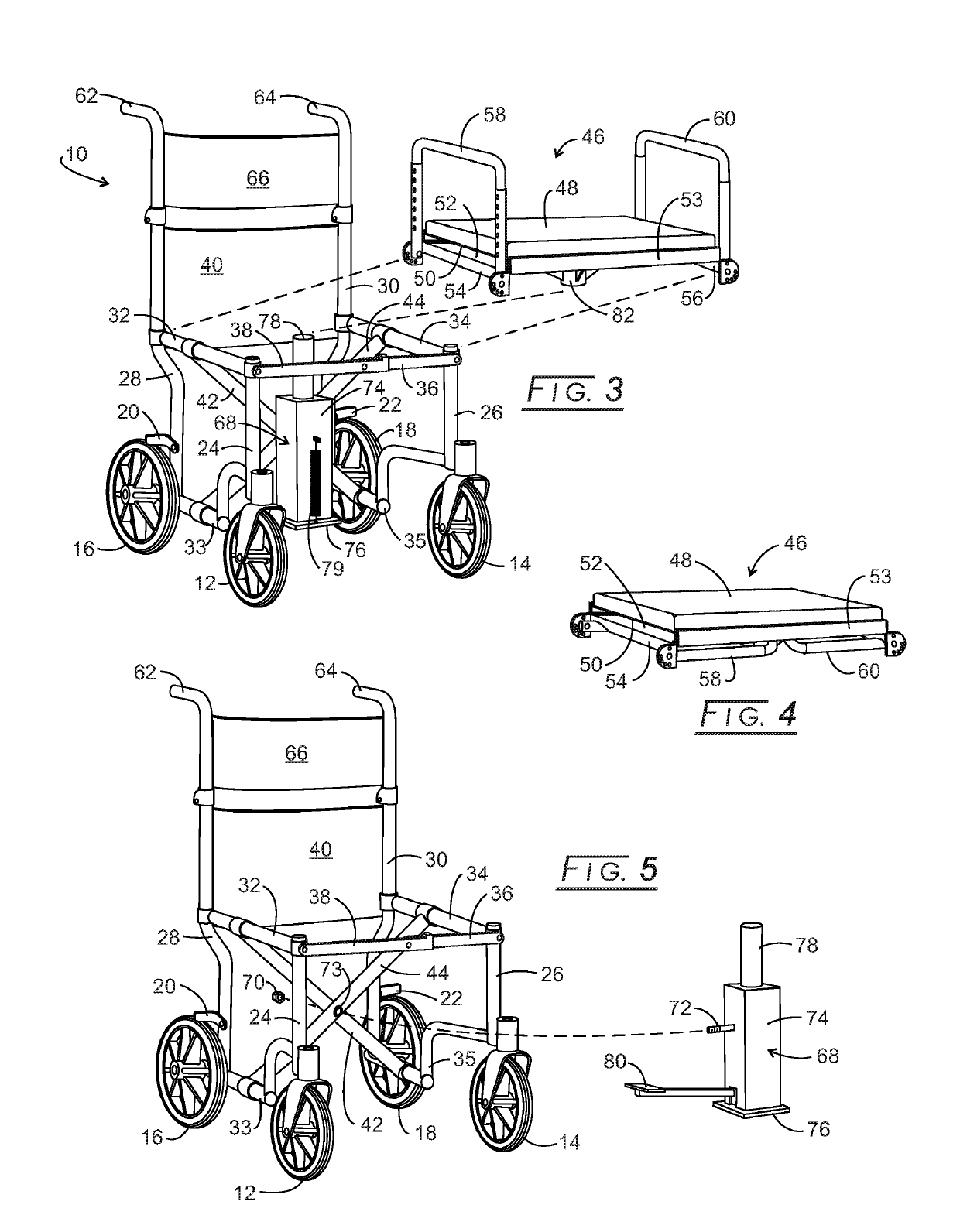Car transfer adapted wheelchair
a technology for wheelchairs and cars, applied in medical science, nursing beds, ambulance services, etc., can solve the problems of difficult to move the user from the wheelchair to the vehicle, particularly difficult, and drawbacks of conventional wheelchairs
- Summary
- Abstract
- Description
- Claims
- Application Information
AI Technical Summary
Benefits of technology
Problems solved by technology
Method used
Image
Examples
Embodiment Construction
[0020]Referring initially to FIG. 1, a disclosed wheelchair, 10, is shown. In conventional fashion, wheelchair 10 is fitted with 2 front caster wheel assemblies, 12 and 14, and two rear wheel assemblies, 16, and 18, which rear wheels are lockable with foot pedals, 20 and 22, in conventional fashion. The 4 wheel assemblies are fitted to a frame assembly, which may be easier to see in FIGS. 3 and 5. The frame assembly includes 4 upstanding legs, 24, 26, 28, and 30, to which the wheel assemblies, respectively, are attached. Upstanding legs, 24, 26, 28, and 30 can be telescoping. In turn, the 4 upstanding legs are attached to a pair of substantially parallel sliding bars, 32 and 34, and are fixed to a pair of bars 33 and 35 at their bottoms. The front sliding ends of bars 32 and 34 are pivoted to a front lateral foldable assembly consisting of a pair of forward lateral bars, 36 and 38. Forward lateral bars 36 and 38 are pivotally connected with bar 38 containing a reward locking project...
PUM
 Login to View More
Login to View More Abstract
Description
Claims
Application Information
 Login to View More
Login to View More - R&D
- Intellectual Property
- Life Sciences
- Materials
- Tech Scout
- Unparalleled Data Quality
- Higher Quality Content
- 60% Fewer Hallucinations
Browse by: Latest US Patents, China's latest patents, Technical Efficacy Thesaurus, Application Domain, Technology Topic, Popular Technical Reports.
© 2025 PatSnap. All rights reserved.Legal|Privacy policy|Modern Slavery Act Transparency Statement|Sitemap|About US| Contact US: help@patsnap.com



